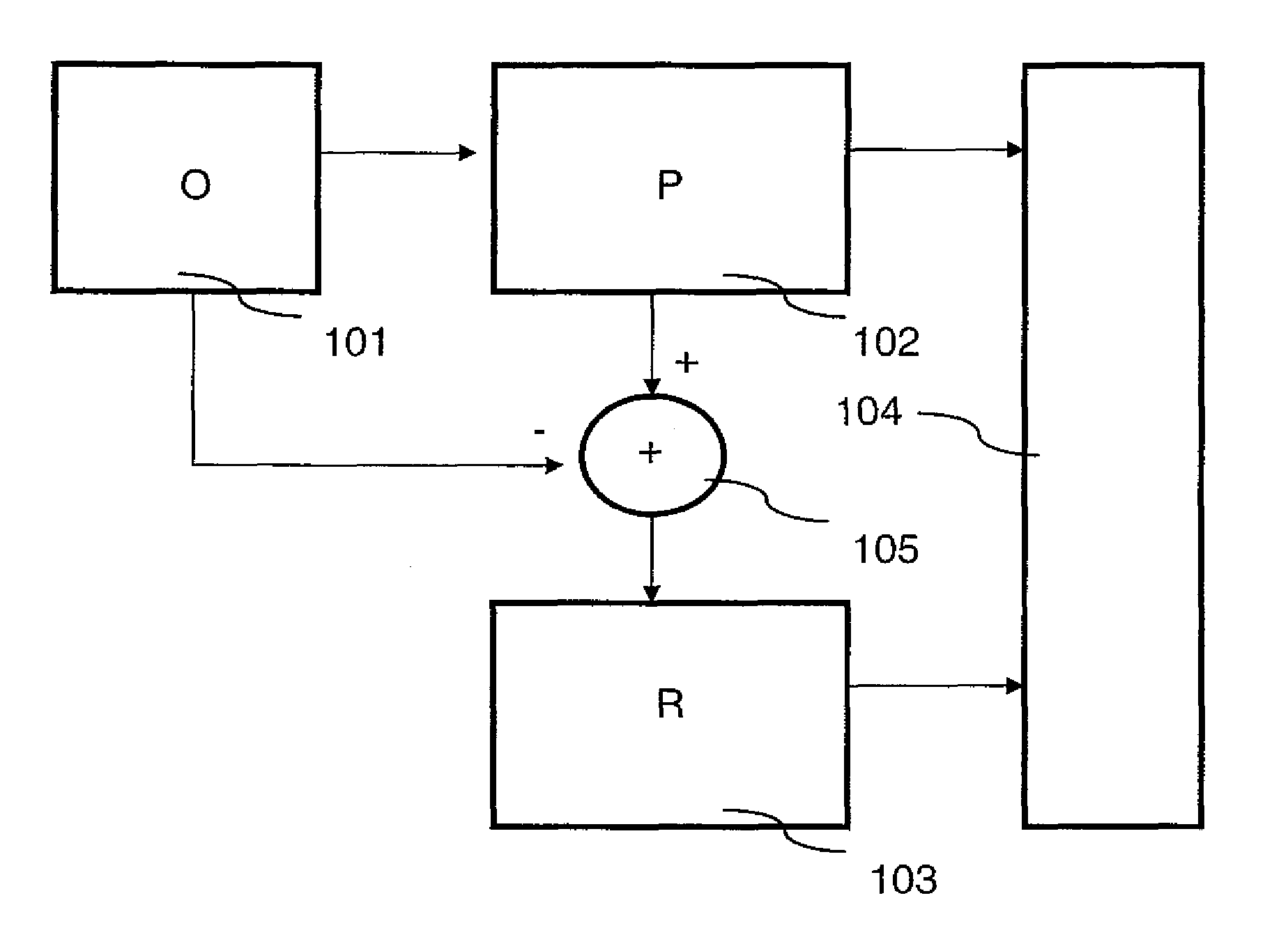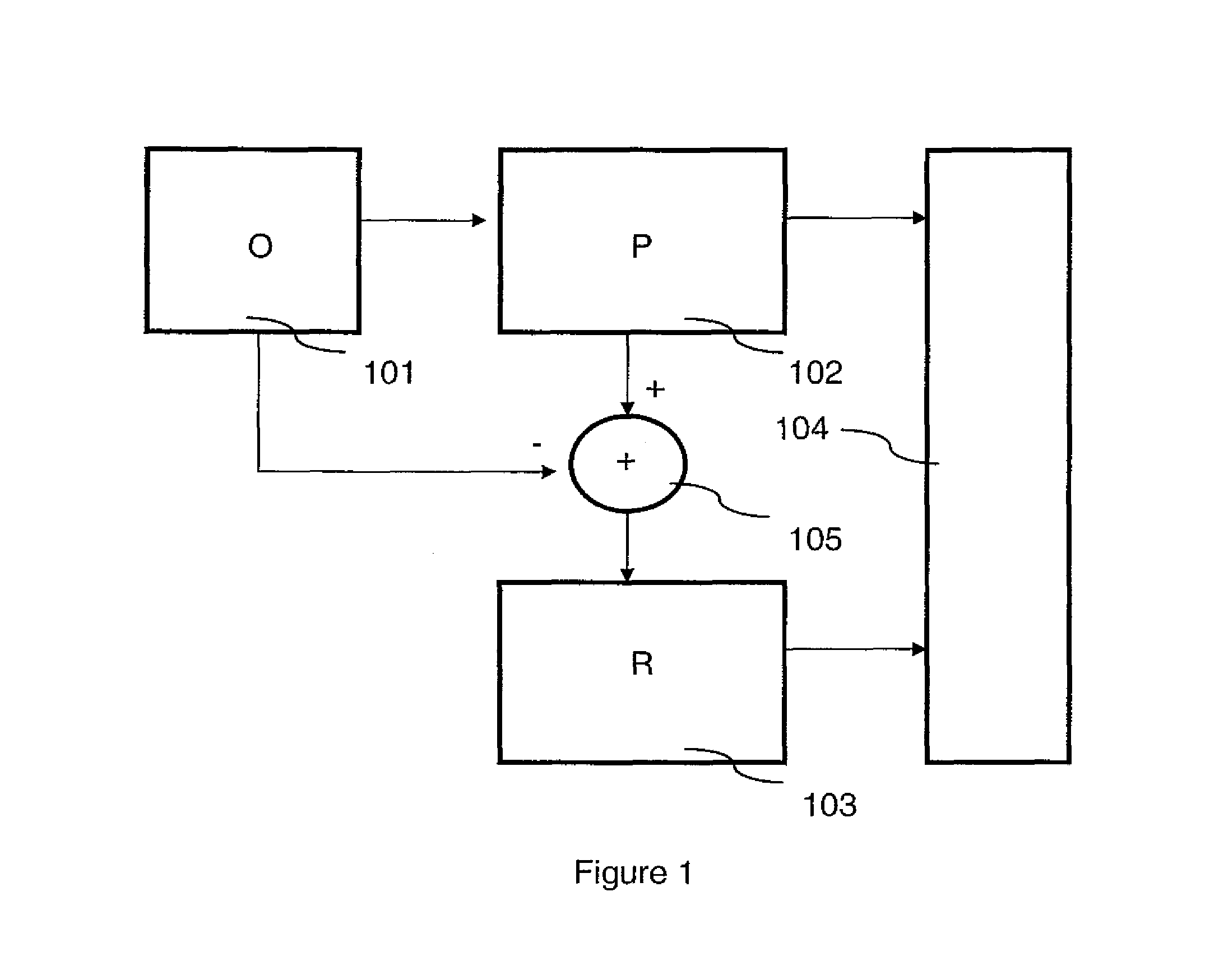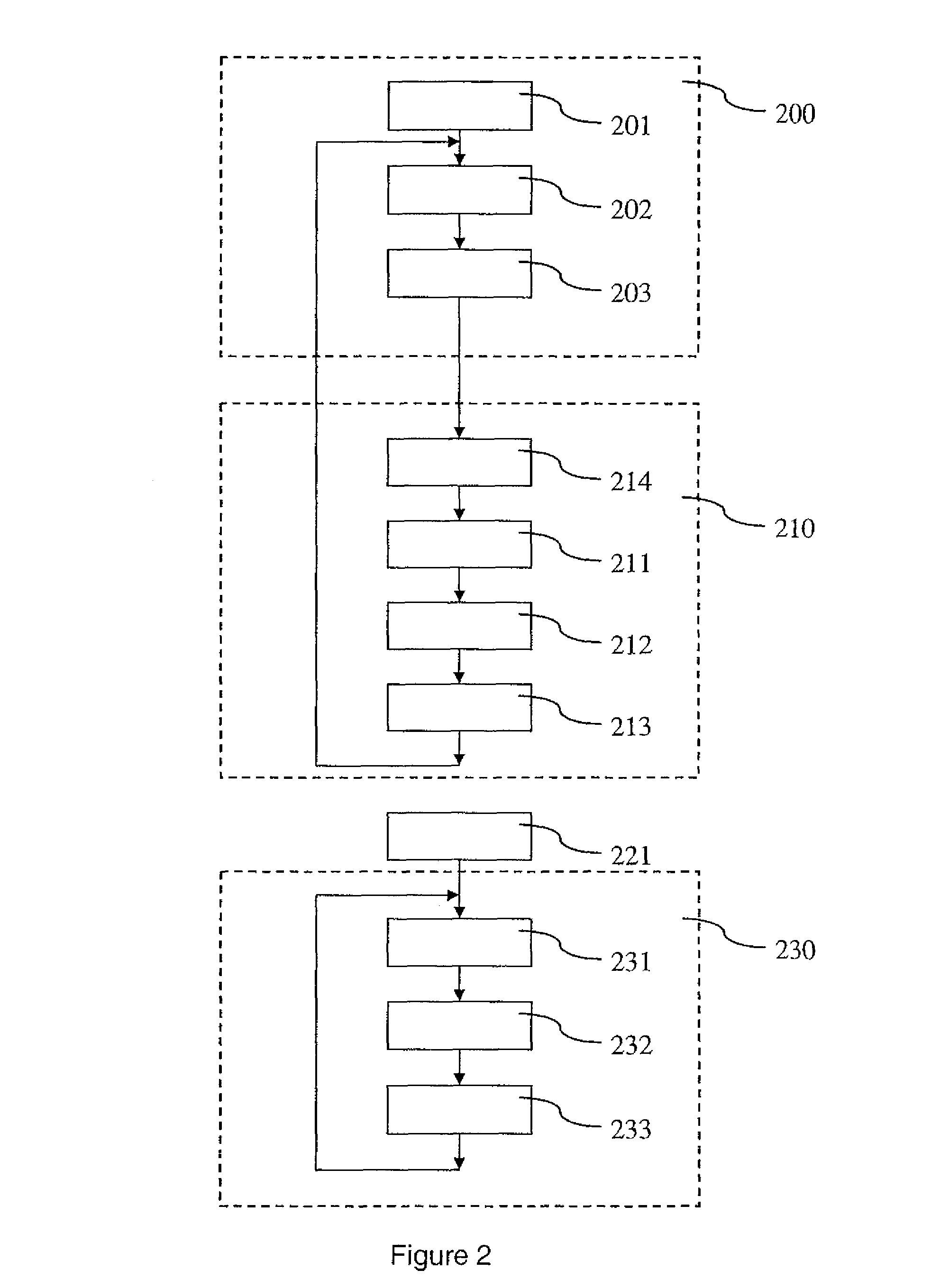Method and device for optimizing the compression of a video stream
a video stream and compression technology, applied in the field of video stream compression, can solve the problems of visual output noticeably worse, costing resources, and affecting the quality of the video stream, and achieve the effect of optimizing the resources used in the decoder and costing resources
- Summary
- Abstract
- Description
- Claims
- Application Information
AI Technical Summary
Benefits of technology
Problems solved by technology
Method used
Image
Examples
third embodiment
[0134]In a third embodiment shown in FIG. 5, during a step 501, the image to be encoded is broken down into blocks, and the blocks of the image to be encoded are saved to memory. The following steps, 502 to 516, are performed in succession for every block of the image to be encoded.
[0135]During a step 501, the motion estimation of the current block of the image to be encoded is performed, and at least one prediction is provided.
[0136]Next, during a step 503, the difference between the prediction and the block from the original image to be encoded is determined, and the results of this difference, known as the “residual,” are written to memory.
[0137]During a step 514, the distortion Dp and optionally the rate Rp that would be generated by the encoding of each prediction in the video stream are estimated, and Dp and optionally Rp are stored in memory.
[0138]During step 514, it is determined whether, for a given block, the residual must be transmitted to the decoding device. To that end...
fourth embodiment
[0149]In a fourth embodiment, shown in FIG. 6, the image to be encoded is broken down into blocks, and stored in a memory area, during a step 601. The following steps, 602 to 616, are performed in succession for every block of the image to be encoded.
[0150]During a step 602, the motion estimation of the current block of the image to be encoded is performed, and at least one prediction is provided.
[0151]During a step 614, the rate Rp and optionally the distortion Dp that would be generated by the encoding of each prediction within the video feed are calculated, and Rp and optionally Dp are saved to memory. During step 614, it is determined whether a motion compensation, or a residual must be encoded, in the following manner: the decision parameter
RD1=Rp*ε+Dp
[0152]is calculated, where:[0153]Rp is the rate of the predicted block (optional),[0154]Dp is the distortion of the predicted block, and[0155]ε, a positive value, is set by the programmer or user of the coder / decoder, or is confi...
PUM
 Login to View More
Login to View More Abstract
Description
Claims
Application Information
 Login to View More
Login to View More - R&D
- Intellectual Property
- Life Sciences
- Materials
- Tech Scout
- Unparalleled Data Quality
- Higher Quality Content
- 60% Fewer Hallucinations
Browse by: Latest US Patents, China's latest patents, Technical Efficacy Thesaurus, Application Domain, Technology Topic, Popular Technical Reports.
© 2025 PatSnap. All rights reserved.Legal|Privacy policy|Modern Slavery Act Transparency Statement|Sitemap|About US| Contact US: help@patsnap.com



